Ancient Mesopotamians Cooked with ………………..

🪵 1. Introduction: Fire, Clay, and the Birth of Cooking in Mesopotamia
Long before modern stoves and ovens, people in Mesopotamia transformed the way they prepared food with their ingenious clay ovens. These early ovens were central to daily life, allowing communities to bake bread, roast meats, and cook hearty stews with efficiency and flavor. By harnessing the power of fire and clay, the people of Mesopotamia didn’t just cook—they created a culinary tradition that shaped the diet, culture, and social life of one of the world’s first civilizations.
In ancient Mesopotamia—modern-day Iraq, Syria, and parts of Turkey—daily life revolved around survival. The land between the Tigris and Euphrates rivers was fertile, but the summers were scorching and winters could be harsh. People farmed barley, wheat, lentils, dates, and raised sheep and goats.
But growing food was only half the story. Cooking it efficiently, storing it, and sharing it? That’s where the clay oven stepped in. It wasn’t just a tool—it was a symbol of civilization. The clay oven allowed people to bake bread, roast meat, dry grains, and feed families faster and better than open fire ever could.
Imagine living 6000 years ago in the land between the Tigris and Euphrates rivers—hot days, cool nights, no electricity, and yet, people were still baking fresh bread, roasting meat, and cooking hearty stews. How? With the humble clay oven.
So let’s go back in time—about 6,000 years ago—and step inside a Mesopotamian kitchen made of mud bricks, with smoke in the air, a warm tannur in the corner, and fresh flatbreads on the wall.
🧱 2. Origins of Mesopotamian Clay Ovens in Mesopotamia: The Tannur Oven History
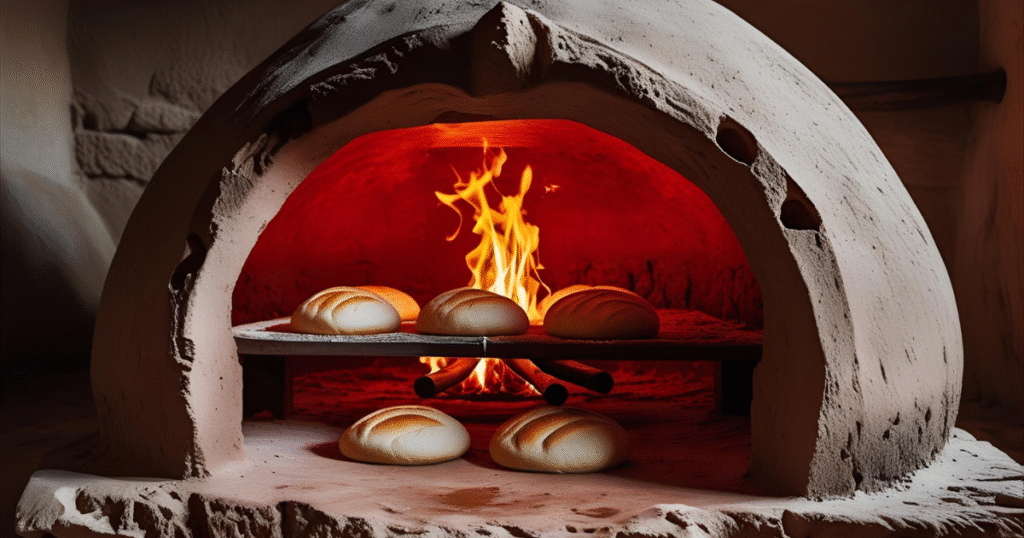
The story of clay ovens in Mesopotamia begins with simple mud-and-straw constructions that evolved into the tannur, a dome-shaped oven designed to retain heat and cook food evenly. Archaeological studies reveal that these ovens were not only used for daily meals but also in religious and social rituals.
Learn how baking evolved over time in The 5,000-Year History of Sourdough Bread
The earliest known ovens date back to the Ubaid period (~5000 BCE). These were small dome-shaped ovens made of clay, often called “tannurs” (from which modern tandoor ovens get their name).
Archaeologists discovered these ovens in ancient cities like Ur, Nippur, and Eridu. Most were found inside homes or in shared courtyards—showing that both families and communities used them.
A tannur was usually a clay cylinder or dome, about 2–3 feet high, with an opening at the top and sometimes a small side hole for air flow. People burned wood or dry animal dung inside to create heat. Once hot, food could be slapped onto the inner walls or placed inside on hot stones or coals.
Interestingly, the invention of the oven allowed people to control heat better. Open fires were hard to manage, but a clay oven kept heat inside longer and more evenly—making baking and roasting much more efficient.
This innovation shaped how people ate and lived. It meant:
✅ Bread could be baked daily
✅ Meat could be cooked thoroughly
✅ Families could prepare meals for storage
✅ Less fuel was wasted
In short: the clay oven was a technological leap forward—just like the refrigerator or the gas stove would be thousands of years later.
🔧 3. How Clay Ovens Worked in Mesopotamian cooking: Ancient Cooking Techniques
So how exactly did these ancient ovens function? Let’s break it down step by step:
1️⃣ Fueling the Oven
Ancient people used what they had: wood, dry reeds, and most often dried animal dung (called gishru in Akkadian). Dung was abundant, especially from goats and sheep, and burned slowly—perfect for steady heat.
2️⃣ Pre-heating
The oven had to be heated before cooking. People would light a fire inside and let the walls absorb the heat. It usually took about 30–60 minutes to reach the right temperature.
3️⃣ Cooking
Once the interior was hot, embers were pushed aside or left inside. Flatbreads (like early forms of naan or pita) were slapped onto the hot inner walls—just like how tandoors work today. Meat, fish, or vegetables were placed on hot stones or clay trays inside the oven.
4️⃣ Ventilation
Some ovens had small side vents or an opening at the top to allow smoke to escape. This kept the heat in but prevented smoke buildup inside the home.
5️⃣ Multi-use Tool
Clay ovens were also used for:
✅ Drying grains
✅ Smoking fish
✅ Making beer ingredients (like malted barley)
✅ Even firing small clay pots or bowls
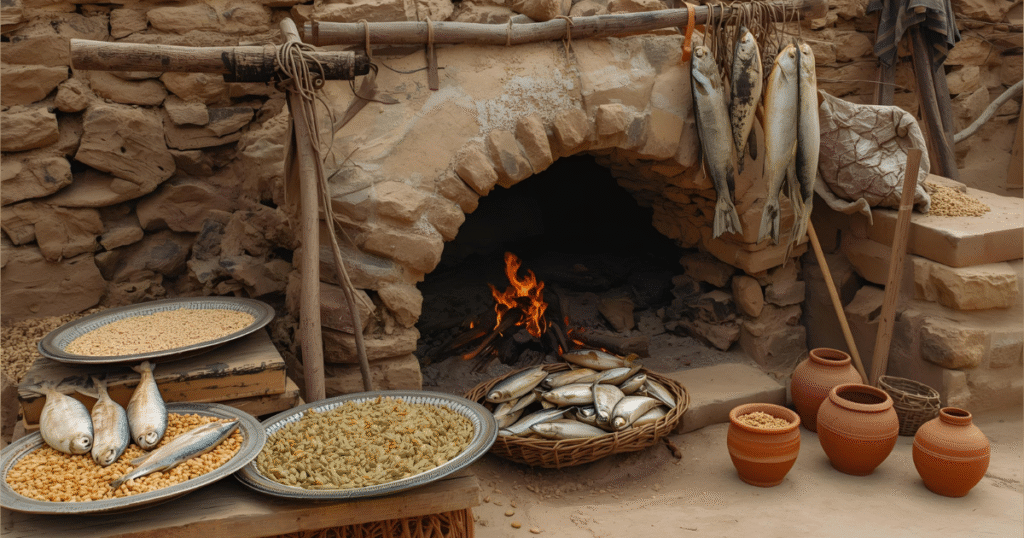
Imagine: one oven, many uses. That’s ancient efficiency.
🥖 4.Ancient Mesopotamians Everyday Foods Cooked in Clay Ovens
So what exactly did ancient Mesopotamians cook in these clay ovens? Here’s a peek into their ancient menu:
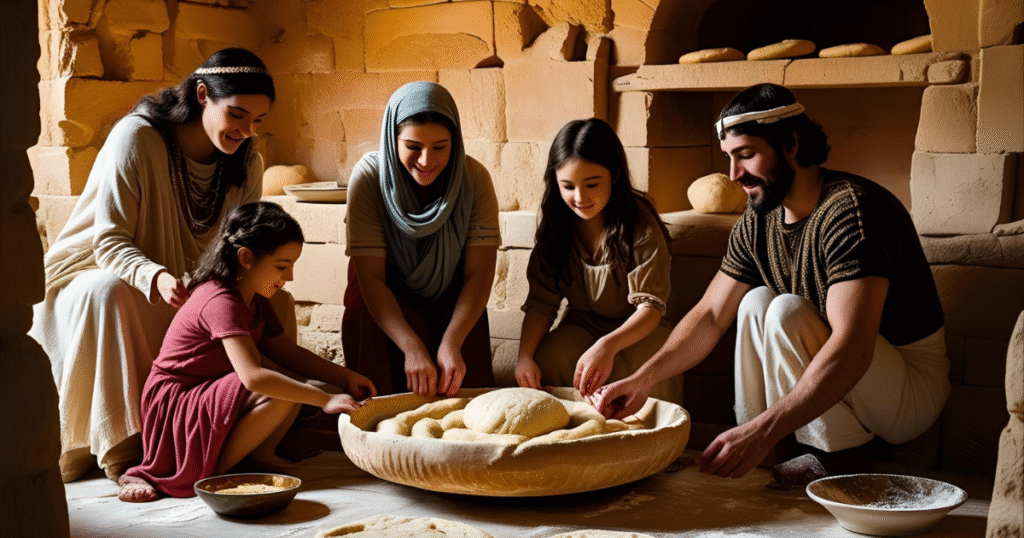
Bread was the heart of every meal. They made different types:
- “Akkadian akalu” (round flatbreads)
- Leavened bread (with early yeast)
- Thick barley bread
They would slap the dough onto the hot inner wall of the oven, where it stuck, cooked, and peeled off crispy and warm.
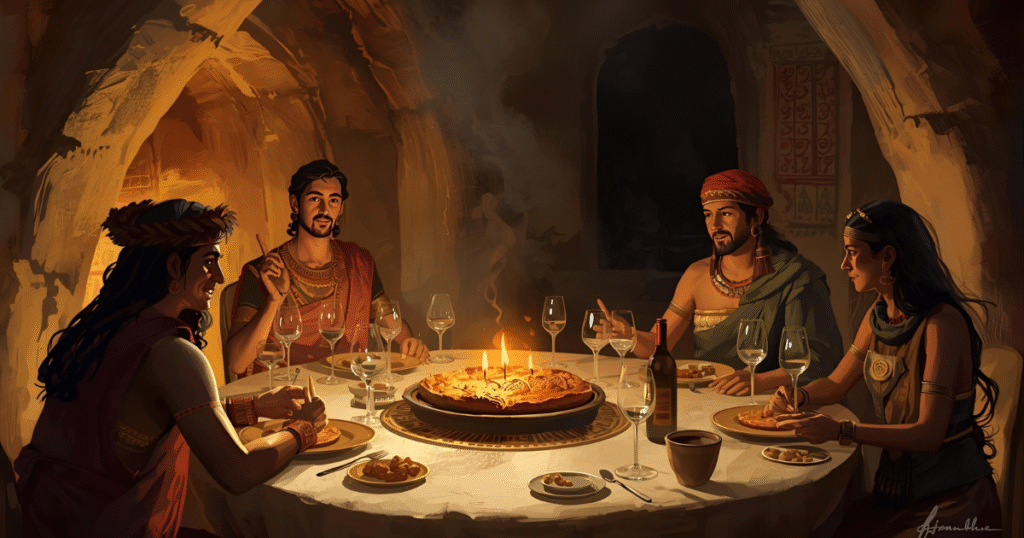
🥘 Stews & Roasts
Although stews were mostly cooked in pots, people also roasted meat in the oven—especially during feasts. Goat, lamb, and fish were popular. Sometimes, meat was wrapped in leaves or coated in clay and baked slowly.
🍺 Beer Ingredients
Mesopotamians loved beer! Barley had to be dried, roasted, and malted—often using heat from clay ovens.
🫘 Roasted Beans & Lentils
Legumes were a staple. Roasting made them easier to chew and digest.
🍪 Sweets & Cakes
Yes, they even had dessert! Archaeologists found recipes for cakes made with dates, honey, and nuts—baked in clay ovens.
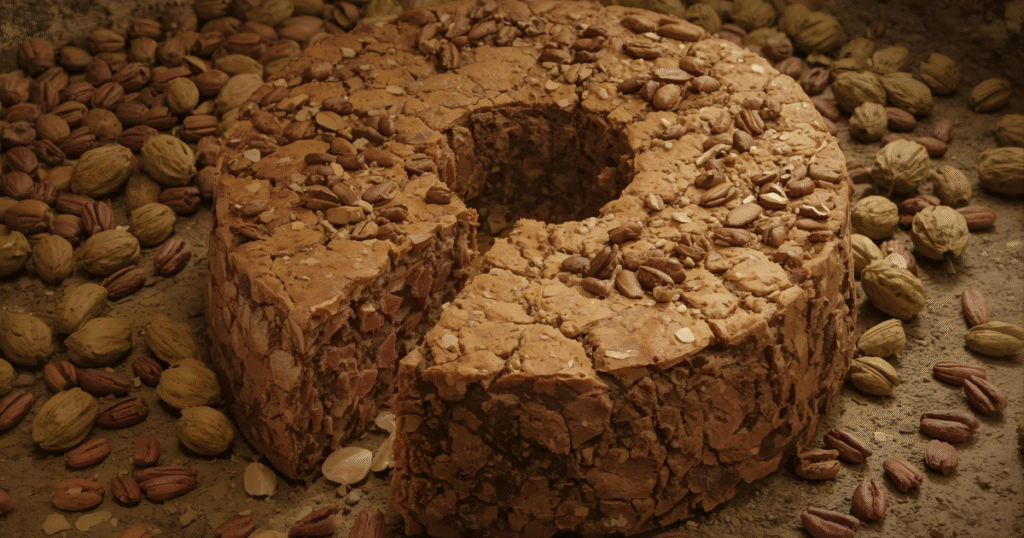
So when you think of ancient food—don’t imagine boring gruel. These people were baking, roasting, seasoning, and experimenting thousands of years before cookbooks existed.
🏠 5. Social & Cultural Role of Ovens
Clay ovens were more than just kitchen tools. They were centers of life.
👨👩👧👦 Family Kitchens
In most homes, the oven was in a corner of the main room or in a small courtyard. Families would gather around it every day—baking bread, preparing meals, warming their hands in winter.
🧑🤝🧑 Community Ovens
In larger towns, shared ovens were common. Neighbours would bring their dough and roast together. It was a social event—a bit like how people today share BBQ grills or community pizza ovens.
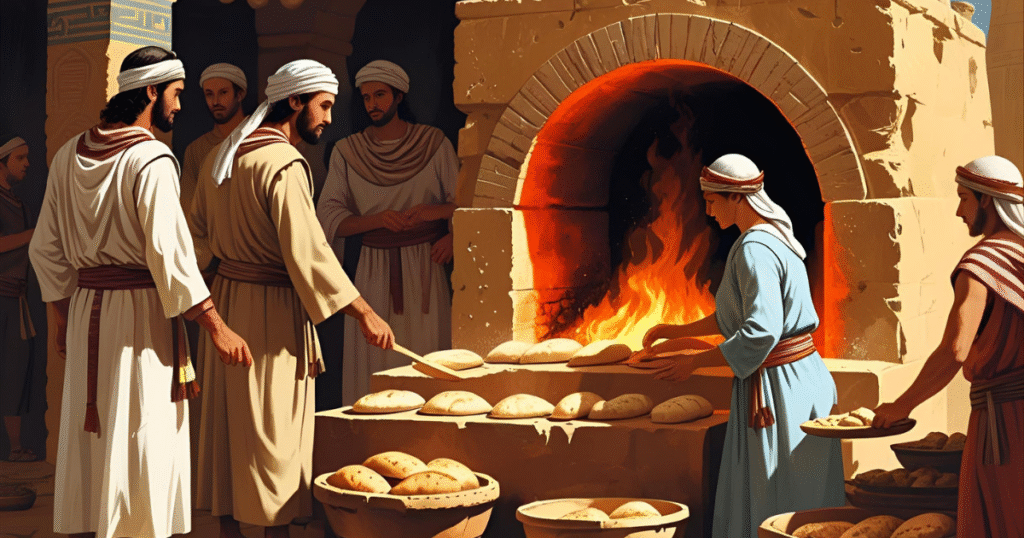
🔥 Symbol of Home
The oven symbolised warmth, nourishment, and stability. In many Ancient Mesopotamian languages, the word for “oven” was related to “hearth” or “home.”
🌾 Religious Meaning
Some rituals involved baking bread as offerings to gods. Special breads were baked during harvest festivals or to honour deities like Ishtar (goddess of fertility and food).
So the clay oven wasn’t just about food—it was about community, culture, and even faith.
🏺 6. Archaeological Discoveries & Evidence
What do we actually know from the ruins? Quite a lot.
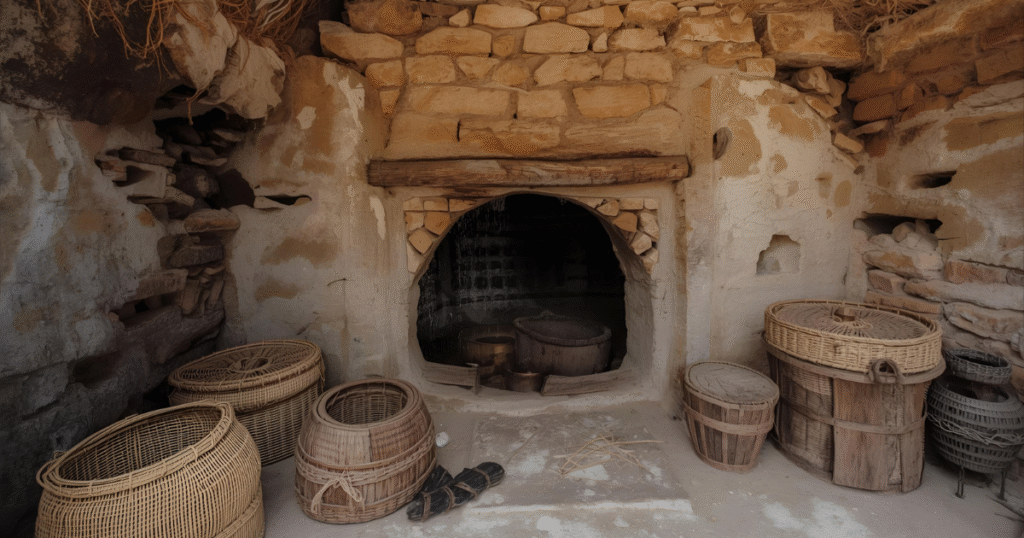
🧱 Excavated Ovens
Archaeologists found well-preserved clay ovens in sites like Uruk, Lagash, and Mari. Some were still filled with ash, charred wood, and even bread crumbs.
🍞 Carbonised Food Remains
At some dig sites, charred flatbreads and roasted grains were discovered—fossilised by time. These give us direct evidence of what was cooked and how.
📜 Written Recipes
Believe it or not, some of the world’s oldest recipes were written on clay tablets. The Yale Babylonian Collection holds tablets with instructions for stews, bread, and beer—dating back to 1700 BCE.
🏺 Cooking Tools
Clay pots, bread molds, ladles, and grinding stones were also found. These tools show how integrated ovens were in daily cooking life.
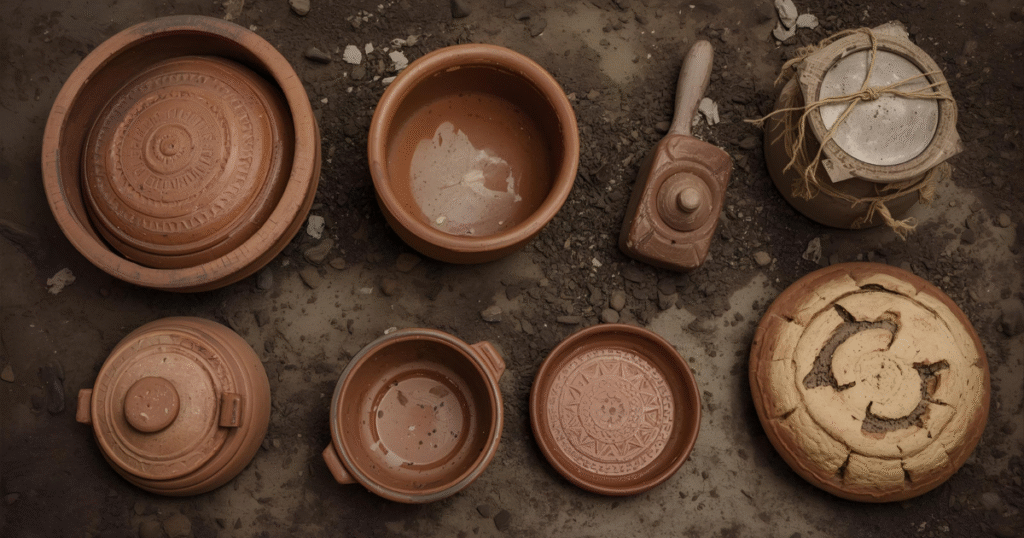
So when we talk about ancient cooking, it’s not guesswork—it’s supported by solid evidence, literal burnt toast, and clay blueprints.
🍽️ 7. Lessons for Modern Cooking
Why should we care about clay ovens today? Because they still have a lot to teach us.
✅ Sustainability: Clay ovens use natural materials, burn fuel efficiently, and last for years. In an age of eco-friendly design, ancient ovens are actually ahead of the curve.
✅ Flavour: Just like a wood-fired pizza oven, clay ovens produce smoky, rich, earthy flavours that electric ovens can’t match.
✅ Community Cooking: Shared ovens encouraged social bonds, cooperation, and cultural exchange. Something modern cities are slowly rediscovering.
✅ Respect for Ingredients: Ancient people had limited tools, so they made the most of what they had. No waste, no additives—just real food.
In fact, clay ovens are still used today across the Middle East, India, and parts of Africa. The technology was so good—it never needed replacement.
👵 8. Grandma’s Corner: A Warm Memory
“Beta, come sit. Let me tell you a story…”
Imagine an old grandma in a small clay-brick house, kneading dough with wrinkled hands, humming a song passed down from her mother.
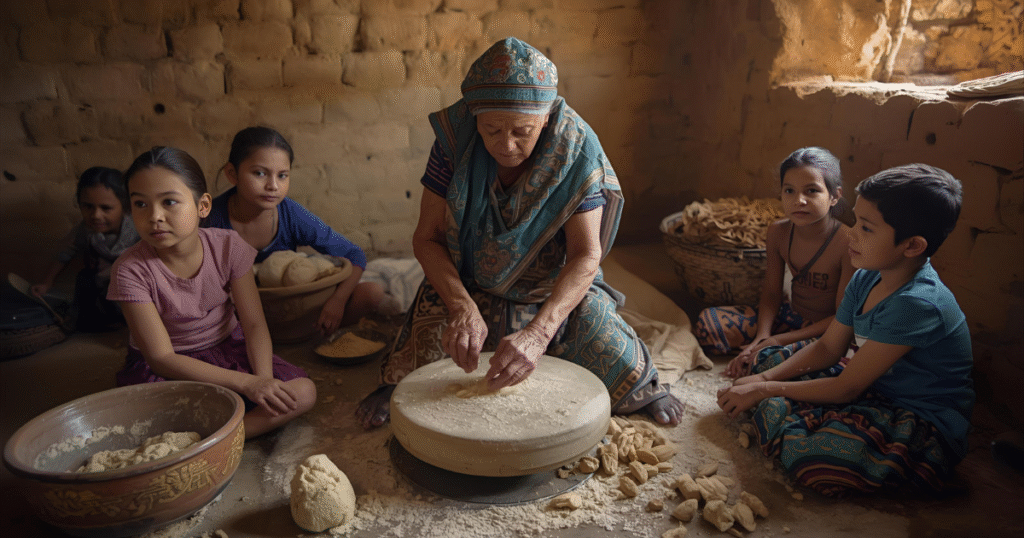
The tannur glows red in the corner. She pats a ball of dough flat and slaps it onto the hot wall with a soft “thwack.” The smell of baking bread fills the air. Children giggle nearby, waiting with eager hands and growling stomachs.
She pulls off a hot bread, tears it gently, and dips it into a bowl of lentil stew. No measuring cups, no timers—just instinct, tradition, and love.
Cooking wasn’t just a task—it was an act of care. Ovens were where stories were told, wisdom was shared, and families bonded. That’s the magic of ancient kitchens: they weren’t just about eating—they were about belonging.
And maybe, just maybe, that same warmth lives on when we break bread together today.
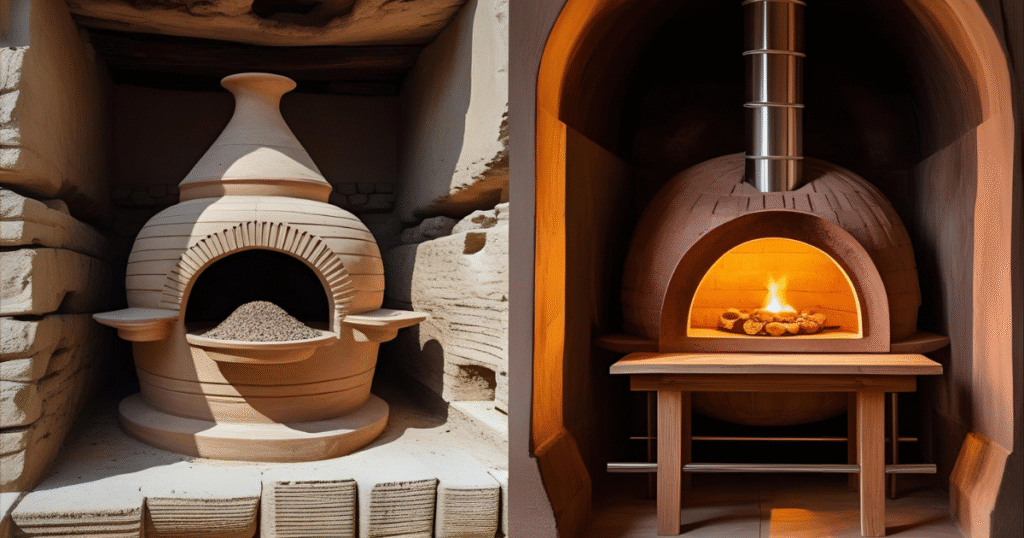
🏁 9. Clay, Fire, and Legacy
Clay ovens were one of humanity’s earliest culinary innovations—and they shaped the food culture for thousands of years. They gave us bread, roasted meat, malted beer, and warm family meals.
But more than that, they taught us something deeper:
🔥 Cooking is connection.
🔥 Food is history.
🔥 And even the humblest tools—mud, fire, and stone—can change the world.
So next time you bite into a warm piece of flatbread or smell wood smoke from a pizza oven, remember: you’re tasting history. You’re sharing a flavour that began in a little clay oven in ancient Mesopotamia.
FAQ:
Q1: What were Mesopotamian clay ovens called?
They were often referred to as tannur ovens, dome-shaped clay structures designed to trap heat and bake bread efficiently. These ovens are the ancestors of modern-day tandoors.
Q2: What foods did Mesopotamians cook in clay ovens?
Primarily barley bread, flatbreads, and occasionally roasted meat or fish. Bread was the staple, but ovens were also used to dry fruits and prepare stews in clay pots placed near the fire.
Q3: How did clay ovens improve Mesopotamian life?
They allowed for consistent, reliable cooking, which helped feed growing urban populations. They also fostered community gatherings since ovens were often shared by multiple families.
Q4: Are clay ovens still used today?
Yes! Many regions in the Middle East, South Asia, and even Mediterranean countries still use variations of the clay oven, like the tandoor or the tabun, to bake bread and roast meat.
Q5: What makes clay ovens special compared to modern ovens?
Clay ovens reach extremely high temperatures and retain heat longer, giving bread a unique smoky flavor and soft inside with crispy crusts—something modern gas ovens can’t fully replicate.
Conclusion: The Lasting Legacy of Mesopotamian Clay Ovens
The story of Mesopotamian clay ovens shows how a simple invention can leave a lasting mark on culinary history. These ovens allowed communities in Mesopotamia to bake bread, roast meats, and cook stews efficiently while also fostering social connections and traditions.
Even today, the principles of Mesopotamian clay oven cooking influence modern baking and roasting techniques in the Middle East and beyond. From traditional tandoors to artisanal wood-fired ovens, the legacy of Mesopotamia lives on in kitchens around the world.

Pingback: Top 7 Secrets of Mughal Royal Kitchens – Legendary Indian Court Cuisine
Pingback: Mesopotamian Recipes: The World’s First Written Recipes (1700 BCE)